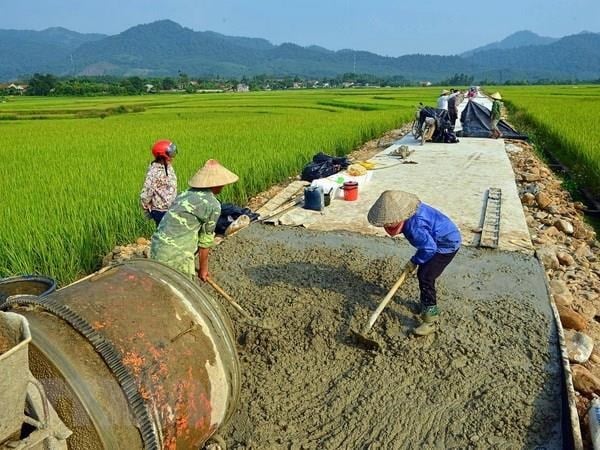At the COP26 climate conference last year, Vietnam’s Prime Minister Pham Minh Chính unexpectedly announced a target of reaching net zero by 2050. The country also signed the Global Coal to Clean Power Transition statement, in which it committed to rapidly scale up renewables and build no more new unabated coal power plants.
This is a major and unexpected pivot for Vietnam. The country has invested heavily in coal power over the past decade and has the most installed coal capacity among Mekong countries, after China.
Just two months before COP26, the government released Vietnam’s eighth power development plan (PDP8) which covered 2021–30 and relied heavily on foreign investment in non-renewable energy. The PDP8 would have doubled coal power capacity by 2030, with more to come in the five years after that.
After its COP26 announcements, the government asked the Ministry of Industry and Trade (MoIT) to revise the PDP8, though an updated draft is yet to be released.
By 2020, Vietnam’s coal power fleet was generating as much energy as all other power sources combined. In that year, the sector emitted about 126 million tonnes of CO2, or around half of Vietnam’s emissions. The country’s emissions have increased in recent years, as those of its neighbours have mostly remained flat or fallen.
Brian Eyler, Southeast Asia director of the Stimson Center, a US thinktank, explains that as Vietnam exports more manufactured goods than its neighbours, sources of electricity generation needed to be developed more quickly, and coal and hydropower were “the easy solutions”.
Around 2010, Vietnam stopped building big dams, instead favouring coal power, when it released its seventh power development plan (PDP7) for 2011–20.
“The Ministry of Industry and Trade judged that the hydro potential had been all but tapped, so they switched the focus to coal,” says Tran Dinh Sinh, a technical consultant for GreenID, a Vietnamese environmental NGO.
“The latest draft [September 2021] of the PDP8 also showed 51 gigawatts (GW) of coal in 2030, so PDP8 is the continuation of PDP7. But [the ministry] are not explaining why they are doing this.”
Research commissioned in 2017 by the Friedrich Ebert Foundation, a German non-profit organisation, found that institutionalised conflicts of interest were a barrier to Vietnam’s transition from coal to low-carbon sources, an observation echoed by Eyler.
“It is hard to convince companies who build coal plants not to do it. They have a lot of power and special interest groups,” he explains, adding that the balancing of interests in the PDP revision process has felt like a boxing match.
“One day the coal people are back on the ropes, and the next day they are fighting hard. It’s just back and forth, back and forth.”
Coal investment drying up
Data from Global Energy Monitor shows that since 2010 Vietnam’s coal sector has received at least USD 29 billion in foreign investment.
The Stimson Center’s Mekong Infrastructure Tracker tells a similar story of reliance on foreign money to build coal plants: for every 100 MW of coal capacity in operation right now, 93 MW was built with some foreign investment.
“Coal was the cheapest and fastest way to meet Vietnam’s electricity needs. And there was easy funding available,” says James Browning, the communications director of Global Energy Monitor.
China, Japan and South Korea used to be the main investors in Vietnam’s coal sector but have now backed away. Even before Vietnam’s announcement at COP26, questions were being raised about how the PDP8 would be funded.
According to the September draft, Vietnam would need roughly USD 44 billion to grow its coal fleet over the next 10 years, or roughly 50% more than all the foreign funds that have flowed into the sector in the past decade – an increase that seems unlikely in the new landscape of coal finance.
Doubt has therefore been cast on the feasibility of the PDP’s projections. After President Xi Jinping announced last September that China would stop building new overseas coal projects, the Institute for Energy Economics and Financial Analysis published a brief.
It concluded that, given the turn away from financing coal by Asian and North American governments and banks, of the additional 30 GW of coal power planned in PDP8, only a third is still feasible. This covers projects already in construction or with funding secured.
Human costs and backlash
Research published in 2017 on the burden of disease arising from coal power in Southeast Asia estimated that if all the coal plants in PDP7 were built by 2030, then Vietnam would face almost 20,000 extra deaths that year due to the resulting air pollution.
Burning coal releases fly ash, which is abundant in tiny particulates. When inhaled, these can lead to heart disease, lung and throat cancers and respiratory diseases. There is, as yet, limited data concerning how damaging Vietnam’s coal plants are to surrounding communities.
In an effort to fill this gap, Nguyen Trong An, a paediatrician at the Center for Health Environment Research and Development (CHERAD) in Hanoi, travelled with a team to Vinh Tan commune on the country’s southeast coast in March 2021. The area is home to three operational coal plants, with another under construction.
The team wanted to gather information from medical logbooks at local health stations in Vinh Tan and nearby commune Phuoc The. In Vinh Tan, the authorities did not supply original documents, claiming that the bookkeeper was away. An says the team plan to return this year to investigate further.
At Phuoc The, he claims to have found that from 2010 to 2020 the rate of death from cancer and stroke was higher than expected. Before the coal plants were built in 2010, for every 100 deaths, 33 were attributable to noncommunicable diseases such as cancer and heart attack. By 2020, this had risen to 70 in 100.
A correlation can be seen, but An says they may not be the only cause of the higher mortality rates and the findings will need to be corroborated with further studies this year.
Despite a lack of localised data on the fuel’s harmful health impacts in Vietnam, some citizens have already turned against coal plants. Of the 54 coal power projects that Global Energy Monitor tracks in the country, eight have recorded protest or opposition.
Local residents in the vicinity of the Duyen Hai power station have complained that the removal of sand dunes to build a coal port has increased the incidence of flooding, landslides and soil erosion.
Meanwhile, the discharge of heated water from the Quang Ninh power plant has caused mass die-offs of fish and shrimp, destroying the livelihoods of hundreds of families.
Adapting to global shifts
At the end of November, MoIT said that by 2045, cleaner energy including gas, solar and wind will account for about 75% of Vietnam’s total installed generating capacity.
However, many experts do not consider gas a ‘clean energy’. Browning points out that, in the short term, the abundant methane released during gas extraction and combustion is 80 times worse than CO2 in terms of its warming effect.
Global Energy Monitor released a report in October 2021 saying that if all planned gas infrastructure in Asia is built then the goal of limiting global warming to 1.5C is unlikely to be met.
Vietnam’s renewable energy sector’s potential is booming. The draft PDP8 predicts that in 2030 the country will need 92 GW of electricity. To meet that demand, Vietnam must grow its energy structure by 18 GW in nine years, or 2 GW per year. In 2020, wind power alone grew by 4 GW, and in 2019, solar capacity increased by 16 GW.
“Vietnam can make a transition away from these previously forecast coal plants,” said Eyler. “The biggest opportunity lies in offshore wind. We could see a very similar boom in wind as we saw in solar in the last two years.”
He added: “I think the China commitment [to stop overseas coal projects] will produce results, and that could work to change the way that those [coal] groups think about the future. Because we’ve seen, like in the US, the big oil and gas companies, they are building solar now. They can make the transition.”
This story was supported by the Mekong Data Journalism Fellowship jointly organized by Internews’ Earth Journalism Network and the East-West Center. It was originally published by China Dialogue on 31 January 2022.





